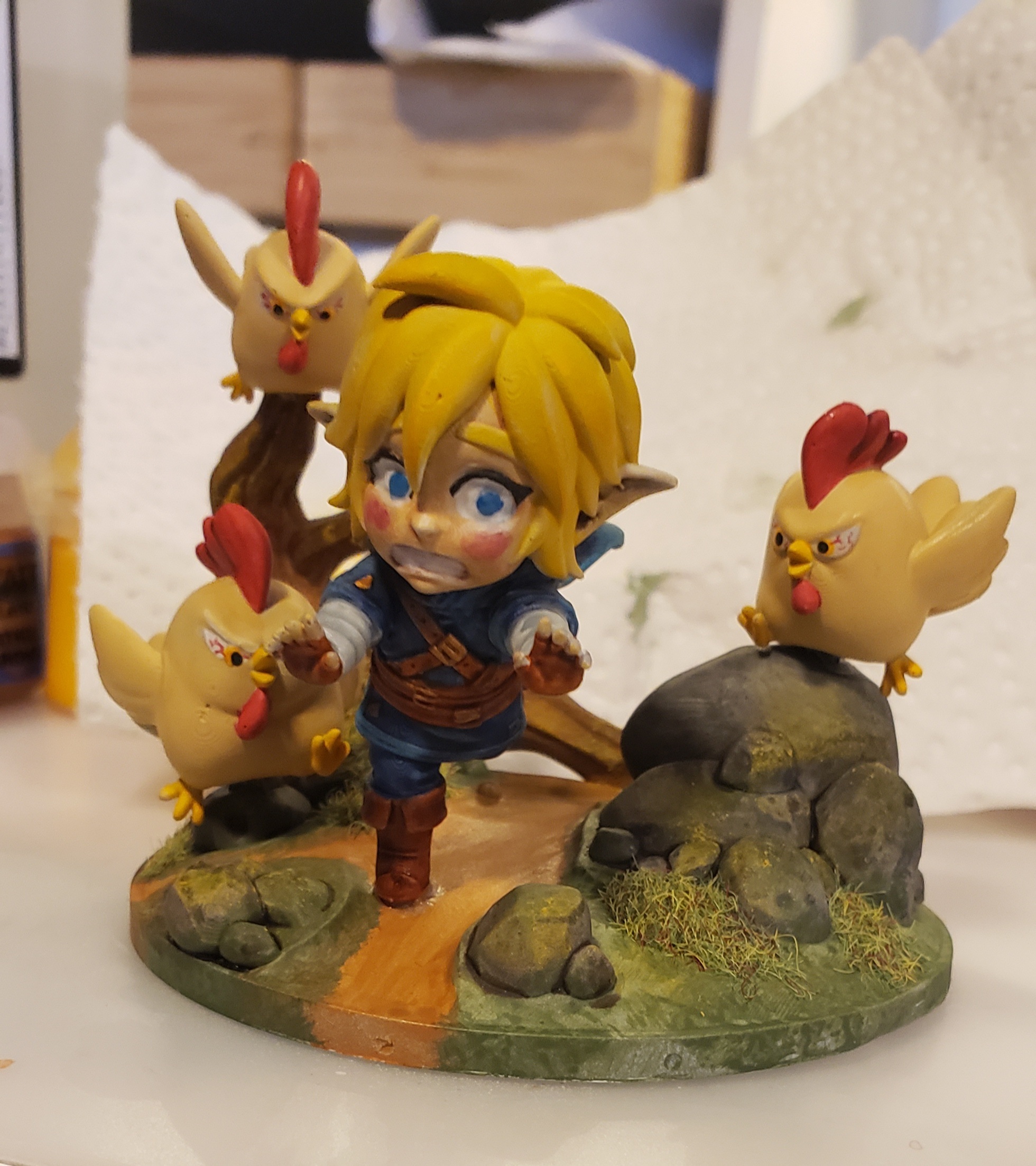A big one for me is Microsoft office (desktop), Libreoffice and other FOSS alternatives just simply don’t come close, and feature wise are 20 years behind. Especially since I basically mastered MS office 2007+'s drawing features, which the FOSS alternatives don’t replicate very well.
And of course Microsoft loves to push Office 365. I don’t pay for that and just use desktop office, but Microsoft prefers you don’t know that you can do this.
And I’m going to get shit on by Lemmy big time for this but while Linux is great and has made vast improvements in recent years, I still use Windows, not only because of MS office, but because a lot of games tend to only support Windows. I know that wine and proton exist but they’re not perfect and don’t feel quite the same as running native.
I wish an operating system existed with a hybridized Linux and clone NT kernel (using code from FOSS Wine and ReactOS of course) so that the numerous back catalog of NT software can run similar to as intended while also interacting with Linux programs better and using a shared environment. Since it would probably become vulnerable to viruses for windows as well, maybe? (my programming knowledge is extremely rusty) an antivirus similar to Windows defender is bundled with the operating system. Hopefully if someone makes such an operating system it can be a Windows killer and would switch immediately
3D CAD software. There are a few options out there (FreeCAD, LibreCAD, etc) and Blender is a thing that exists for more artistic 3D modeling. But they simply don’t hold a candle to the features and capabilities of the paid packages, which typically have costs in the 4-to-5-digit range. And I’m not talking the crazy high-end simulation options - those I understand, they’re hard - but basic modeling features.
Hell, I’d even settle for a CAD package that had some solid basic features and had a reasonable purchase cost. Unfortunately the few providers have the industry by the throat, and so your options are “free but terrible” and “you need a mortgage to use this”.
I grew up learning organic modeling in blender and ever since I got a 3D printer, it’s just been so easy to make things with it as opposed to learning CAD. I’m getting better thanks to OnShape and FreeCAD 1.0 but I keep finding myself going back to blender because “it just works” once you understand how to setup scaling and snapping for manipulating vertices. Basically just setup your world measurements to metric and scale it to 0.001 and then every unit will be 1mm (helps me work within the 250^3mm space of my print bed, mentally) and export as stl.
There’s even a 3D printer toolbox add on that lets you analyze and fix problems like manifold edges and additional mesh tools like manifold extrude that speed up the process for good quality parts. CAD’s biggest advantage is the non linear history editing which is super powerful but you can definitely do non-destructive editing in blender using modifiers that only get applied at export time so you even have a functional equivalent if you’re organized and plan ahead a little.
I guess what I’m saying is, blender is amazing software and absolutely capable as a workhorse for 3D printing. You’re right that the multi-digit costing proprietary software is leagues better for designing digital parts and assemblies but blender is extremely flexible and not just for the more artistic side of things, you can make extremely technical parts with blender.
You beat me to it. The moment someone makes a FOSS cad program where the ui doesn’t suck a donkeys ball they will be the goat
A big one for me is Microsoft office (desktop), Libreoffice and other FOSS alternatives just simply don’t come close,
What, exactly, is missing? MS Office pretty much peaked, feature-wise, in like 2003 (or, arguably, 2007), and LibreOffice is ahead of that. I also find the workflow to be closer to “classic” Office and, to a slightly lesser extent, WordPerfect, which I appreciate.
You can even give LibreOffice the ribbon menu if you want (it’s in preferences somewhere). The default button icons may be rough (though recent versions have improve), but you can even customize those.
MS Office pretty much peaked, feature-wise, in like 2003 (or, arguably, 2007
For me it’s Office 2000. The flat UI is so efficient and yeah, there isn’t any features missing that I’ve encountered. Takes no resources to run and works the same if you’re on Windows 95 or 10. My family members still get me to install it if they get a new computer. It is also free to download from the Intetnet Archive.
I use LibreOffice for the most part because I’m on Linux.
I think Windows 2000 was the last Windows version I actually liked. It went downhill from there until 8 when I finally jumped ship for good. If I recall, Office 2003 was pretty close to Office 2000, just not as “flat”. I’m just more familiar with 2003 since I had it on my own PC and only used Office 2000 in the labs at school (so I could be mistaken).
I did a little reading, and yeah, the core applications remained mostly unchanged from 2000 to XP to 2003. I’m more familiar with 2000 as that’s what I had growing up and that’s probably why I like the flat UI the best.
In MS Office 2007, Gradient support on shapes was massively improved (more than 2 points on custom gradients), Blurry shadows and glows were indroduced, 3D bevels and rotation support was added, better effects on photos were introduced and you can remove backgrounds. In office 2019, you can also import and export Drawing objects to SVG
Gradient support on shapes was massively improved (more than 2 points on custom gradients), 3D bevels and rotation support was added
Can’t say that’s a feature I’ve ever really needed in an office suite, so am unable to confirm or deny LibreOffice can’t do it.
better effects on photos were introduced and you can remove backgrounds
That’s kind of outside the scope of a word processor / office suite. I just use GIMP and import it into the document.
In office 2019, you can also import and export Drawing objects to SVG
LibreOffice Draw (part of the suite) can create, edit, import, and export SVGs. LibreOffice writer can import and use them.
It sounds like you’re just complaining that other office suites don’t have a bunch of out-of-scope, unnecessary features bolted on. Definitely not worthy of condemning them over that.
The features aren’t “unnecessary” if you’re so used to them
The entire phone-based ecosystem.
I’d love to see a user-friendly, easily-implemented FOSS alternative to the entire Android system.
The options that exist now often can’t get past all the defenses that Android and phone manufacturers put into systems to secure their own data collection/revenue. I have an older Motorola phone that I literally can’t install another operating system on.
We desperately need a stable, user-friendly, and hardware-adaptive replacement for Android. I don’t want that shit on my phones any longer.
A manufacturer phone pre-installed with LineageOS would be awesome.
Pixel + GrapheneOS is a dream.
And they’re even working on releasing phones that come with GrapheneOS preinstalled
Its sort of a thing. Pine phones use open source linux. I think the main problem is development of apps to run on a linux phone isn’t popular so its pretty bare bones as a system. Havent used one myself though.
huh, i much prefer libreoffice to msoffice, i can’t even think of a reason why anyone could prefer msoffice.
Im a but gobsmacked at the notion.
what do you use the drawing for?
memeoffice.
didn’t think msoffice would be the easiest platform to build memes/diagrams on.
I actually didn’t even know office could build something that complicated.
thanks
It might be able to do it but it’s absolutely the wrong tool for the job. That’s Adobe Illustrator territory for sure and maybe inkscape can do it (not familiar enough with it to be able to say) but vector art creation tools are what you really want for this kind of thing.
Hmm, LibreOffice may not be the prettiest, but it works. For my own documents and presentations I use Typst nowadays. That’s a blazing fast modern typesetting alternative to LaTeX. That being said, I can’t stand WYSIWIG stuff but that might not be everybody’s cup of tea.
I mostly run into stubborn manufacturers like Roland that only release their musical instrument companion apps for Mac/Win and leave Linux Digital Audio Workstations hanging.
@VirusMaster3073 music DAWs. I think the only real option is Ardour, but I tried it and was struggling to just figure out how to create a couple instrument tracks. Could be skill issue, but honestly I’m pretty good at figuring out UIs so if I was struggling a lot with the basics, it’s probably not just me. So I’m still on garageband for now which doesn’t get in my way when I’m trying to make music
Totally agree. The DAW space is depressingly neglected as FOSS and I can’t imagine why. 15 years ago I was certain there would one day be a FOSS DAW that had the same love put into it as Blender.
I’m not sure I follow. LibreOffice is at least as good (if not better) than Offics365 unless maybe if you’re doing advanced shit in Excel, or need specifically coded macros.
Considering Microsoft’s push to make everything into a webwrapped application, I think LibreOffice is only going to be a better and better alternative as time moves on.
I mean LO is pretty good, but it is a bit rough to find what you want. At a min its more difficult to format your sheets in LO.
Project management. There is one very good but old solution, open project is barely bearable.
I know managers who swore by MS Project (2007 I think?), and I didn’t totally hate it myself. Haven’t really looked for an alternative, but also, haven’t needed to for the most part.
I wonder if it’s just that project management has changed since then, and everything is all Jira/Kanban boards now? I think most of our projects have been laid out in Trello-like software and Git issues/tasks for probably the last 8 or 9 years.
I like being able to create a task with one click, define a dependency to another task and build a complete gantt diagram very fast. Then just add estimates and a plan of who works when to estimate completion. Then just assigne the jobs and track progress relative to the original plan so I can learn to plan more detailed and estimate Better.
Edit: critical path analysis is Paramount.
MS Onenote. Nothing comes close to it. With stylus support etc…
I will check it out
FreeCAD still crashes for me a lot, across versions and distros and different PCs. I just don’t know what the deal is; maybe bad luck.
Then, its kernel, being the only truly viable open source one, is understandable but also has some limitations commercial tools don’t, and I’m just talking about super basic stuff like giving up on a fillet or chamfer as soon as two vertices touch.
The workflow is much improved, as are the heuristics for user intention (yes, yes, the “crutches”) and to mitigate toponaming, but I still get frustrated trying to use it for my stupid keyboard and other 3D printing projects. I have Alibre Design on my Windows partition, and with the improvements in Linux gaming (seriously OP, it’s WAY better these days), CAD is the main reason I even bothered to keep my old SSD with Windows.
There are probably things I do at work in MS Office that Libre would have a hard time with, but frankly I just don’t care. :-)
I heard https://www.onlyoffice.com/ is good, but have no personal experience.
Adobe After Effects!! PLEASE DEAR GOD
This is the singular thing still keeping me using Adobe software. If this was replaced then I could be FREEE
I’m curious how DaVinci resolve’s fusion page compares?
Tax filing software
It’s the only reason I keep a windows VM around. Windows is getting so naggy though. Every time I boot it up, it wants me to update it, install virus scanner and ser up my user on microsoft vs local.
I’d like to see an open-source decentralized game store, like a competitor to Steam, GOG, etc. However, I think it should also target emulators. There’s still an unfounded stigma toward emulation even though emulators themselves are legal, and even though the big AAA game companies themselves are now using them as a lazy way to repackage and resell their old games on new platforms.
One of the biggest barriers to entry into emulation is the setup. Even with super user-friendly frontends like Emulation Station, people are still required to either go out of their way to either legally backup the games they already own, or told to “do some searches,” because of legal issues. Nevermind how this exposes new users to potential malware.
But people still make new games for these old systems. It’s entirely possible to make a store that can sell ROMs legally - one already exists, itch.io. But imagine a federated open-source game store, one where game makers can choose to legally sell their own games, and then create plugins for the emulation frontends to allow people to buy roms directly from those interfaces. It would turn emulation into a fully complete console-like experience, all while being available on more platforms than any console could ever hope to be (including those same consoles when they’re jailbroken!)
I also think it would be the final puzzle piece that legitimizes emulation.
This sounds dreamy












